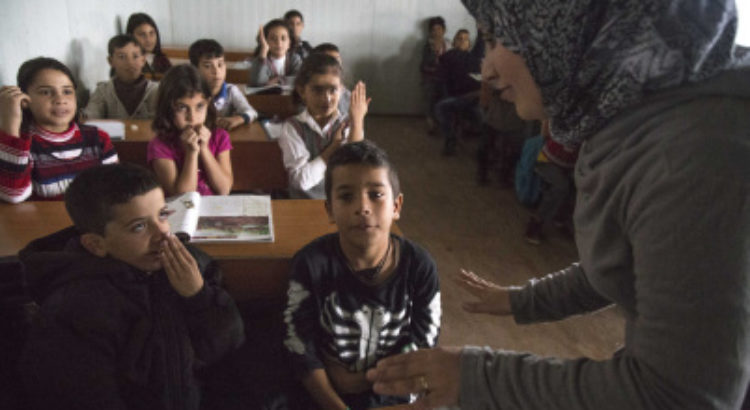Migration continues to be very high on the political agenda of high income countries. Europe is home to 30% of the total population of migrants. The Annual Report on Migration and Asylum 2017, a monitoring tool that reviews policy developments in 24 out of 28 European Union countries plus Norway, which was published last month by the European Migration Network, takes readers through a familiar menu of asylum procedures, border controls, family reunification rules and visa regimes.
But the report also devotes good space to education, in the context of ‘integration’ of migrants and refugees, which suggests that EU Member States increasingly realize that what happens in classrooms is key for their diverse societies, a message that the 2019 GEM Report on migration and displacement, due out on November 20th, will emphasize.
European countries see education as important for ‘integrating’ migrants
Measures to improve the education attainment of migrants and refugees have included making school or vocational training compulsory for all those younger than 18 years old in Austria, except for those with temporary residence; or legislating measures welcoming newly arrived immigrant pupils into schools in Belgium; and disseminating information about the national education system in the Czech Republic.
Many countries assigned priority to enhancing migrants’ language skills. In Estonia, an online platform was developed to help learn the language and language cafés and language and culture clubs were organised all over the country in 2017. France carried out online language courses and mapped language training opportunities. Germanydoubled resources to support daily language education in day-care centres and started another programme to facilitate access to early childhood education and care for children who do not yet benefit from institutional child care. Luxembourg introduced pluri-lingual education in pre-schools. And the Netherlands focused on quality assuring language courses through supervisory visits.
Legal issues remain pertinent, with growing number of vulnerable groups that require protection, such as unaccompanied minors for which almost all countries introduced changes in legislation, policy or practice. In Norway, an amendment to the education act established that children shall have access to primary and lower secondary education within a month.
But these are only some examples in a patchwork of interventions that range from improvements in the recognition of occupational or educational qualifications of migrants and refugees to establishing intercultural education school networks.
 Facilitating international student and researcher mobility takes up European governments’ interests
Facilitating international student and researcher mobility takes up European governments’ interests
In addition to migration for work, migration for education is increasingly important, as European countries strive to strengthen their ability to attract global talent. Two in three countries adopted measures related to admitting and receiving foreign students and researchers. For example, Lithuania focused on increasing the limit of working hours, which is a factor that makes countries more attractive destinations for study. Likewise, students in Portugal were also granted more time to seek employment after graduation.
Other countries simplified the application process for international students. TheCzech Republic, for example, shortened the time for prospective students’ appointments for visa applications in embassies and consulates, while theNetherlands set up a Housing Hotline to respond to accommodation shortage challenges. Some countries took measures to attract students from specific third countries: Finland carried out promotion activities in countries via social media for instance and Slovakia granted scholarships specifically to Syrian refugees.
 What will it be like in 2018?
What will it be like in 2018?
While these measures demonstrate the variety of approaches currently followed in Europe, they also suggest gaps and the fact that many of these measures are often not coordinated. By the end of the year, a report by the Eurydice unit will present more systematically policies aiming to integrate students with migrant background in European schools, which our report will place in the global context of voluntary and forced movements of people around the world. Education policy makers’ responses hold the key for making migration an opportunity rather than a challenge.
Fuente: https://gemreportunesco.wordpress.com/2018/06/22/what-education-policies-did-european-countries-prioritize-for-migration-in-2017/





 Users Today : 53
Users Today : 53 Total Users : 35459959
Total Users : 35459959 Views Today : 65
Views Today : 65 Total views : 3418530
Total views : 3418530